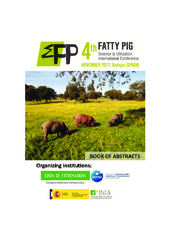Приказ основних података о документу
Effect of Castration Method on Growth Rate of Indigenous Pig Breed Mangalitsa Swallow Bellie
| dc.creator | Radović, Čedomir | |
| dc.creator | Petrović, Milica | |
| dc.creator | Čandek-Potokar, Marjeta | |
| dc.creator | Savić, Radomir | |
| dc.creator | Parunović, Nenad | |
| dc.creator | Radojković, Dragan | |
| dc.creator | Gogić, Marija | |
| dc.creator | Izquierdo, Mercedes | |
| dc.date.accessioned | 2018-10-09T20:49:21Z | |
| dc.date.accessioned | 2018-12-18T16:32:17Z | |
| dc.date.available | 2018-10-09T20:49:21Z | |
| dc.date.available | 2018-12-18T16:32:17Z | |
| dc.date.issued | 2017 | |
| dc.identifier.isbn | 978-84-697-7375-8 | |
| dc.identifier.uri | https://zenodo.org/record/1135200 | |
| dc.identifier.uri | http://epserbia.open.ac.rs/123456789/197 | |
| dc.identifier.uri | http://r.istocar.bg.ac.rs/handle/123456789/573 | |
| dc.description.abstract | Extremely rich genetic funds of animals obtained by natural selection through the centuries are very important resources of Serbia. In Serbia, surgical castration of male animals in first week post partum is a usual practice to avoid boar taint. Considering that Mangalitsa sows are good mothers and most aggressively protect the piglets we tested the alternative to physical castration. The aim of this study was to examine the effect of method of castration (physical or immunocastration) on growth potential of indigenous pig breed Mangalitsa Swallow Bellied. Investigation included surgically castrated (SC; n=12) and immunocastrated (IC; n=11) male pigs, fed ad libitum a feed mixture with 12-13 MJ ME/kg; 13-15% crude protein (two-phase feeding). The experiment started at 24.4 weeks of age when average body weight (ABW) of SC pigs was 24.3 kg and of IC pigs 28.4 kg. Immunocastrates were vaccinated with Improvac® (Zoetis-Pfizer) at 39 (V1) and revacinated at 46 (V2) weeks of age (WA). Pigs were slaughtered 6 weeks after V2. Until V1 when IC are actually entire males, growth rate was slightly lower in IC than SC pigs (446 vs. 495 g/day, respectively). Established difference was statistically significant (P=0.03). In the period between V1 and V2 growth rate was alike in IC and SC (454 vs. 448 g/day, respectively; P=0.92). Overalluntil V2, there was no difference in ABW between IC and SC pigs (99.2 vs. 100.2, respectively; P=0.89). The maximal growth rate (689 vs. 683 g/d for SC and IC, respectively) was observed between 35 and 39 WA. In the period after V2 until the end of the fattening period growth rate was significantly higher (P=0.002) in IC than SC pigs (548 g vs. 392 g, respectively) in agreement with higher feed intake of IC than SC (3.2 vs. 2.7 kg/pig/day recorded on a pen basis). Present results on the indigenous Mangalitsa breed confirm what has been previously demonstrated in modern breeds, i.e. that after the effective immunisation the pigs increase their feed intake and consequently growth rate. | en |
| dc.language | en | |
| dc.publisher | Badajoz : CICYTEX | |
| dc.relation | info:eu-repo/grantAgreement/EC/H2020/634476/EU// | |
| dc.rights | openAccess | |
| dc.rights.uri | https://creativecommons.org/licenses/by/4.0/ | |
| dc.source | Book of Abstracts of the 4th Fatty Pig Science and Utilization International Conference | |
| dc.subject | pig castration | |
| dc.subject | immunocastration | |
| dc.subject | surgical castration | |
| dc.subject | fattening abilities | |
| dc.title | Effect of Castration Method on Growth Rate of Indigenous Pig Breed Mangalitsa Swallow Bellie | en |
| dc.type | conferenceObject | |
| dc.rights.license | BY | |
| dcterms.abstract | Радојковић, Драган; Изqуиердо, Мерцедес; Паруновић, Ненад; Гогић, Марија; Чандек-Потокар, Марјета; Петровић, Милица; Радовић, Чедомир; Савић, Радомир; | |
| dc.citation.spage | 141 | |
| dc.citation.epage | 142 | |
| dc.identifier.doi | 10.5281/zenodo.1135200 | |
| dc.identifier.fulltext | http://r.istocar.bg.ac.rs/bitstream/id/1538/bitstream_1538.pdf |


